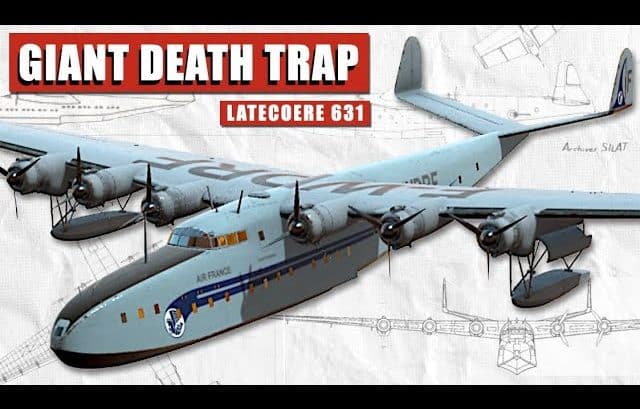The Latecoere 631 was in every sense a flying behemoth. In the 1930s, transatlantic flights were booming, and in 1936, the Directorate General for Civil Aviation in France issued a specification for a 20-passenger flying boat airliner with a range of 6,000 kilometers.
Development
In October 1937, Latecoere finalized their new and updated version of the aircraft dubbed the 631. A small-scale model for wind tunnel testing was created. And with testing revealing no significant issues, the order for a full-scale prototype was soon underway.
The aircraft had truly enormous proportions – it was 43 meters in length, 57 meters in wingspan, and a whopping 10 meters tall, the 631 was developed out of 32,000 kg of aluminum, and would house 46 passengers in relative luxury.
The Latecoere had also been able to equip the plane with six Wright R-2600 Cyclone engines, which at 1,600 horsepower each, have a modest power increase.
World’s Longest Aircraft
Standing at 10 meters tall, 43 meters in length, and 57 meters in span, the 631 was considered the longest aircraft in the world and one of the heaviest.
It also had a very striking design. With a large angle of dihedral on the elevators, twin vertical stabilizers, and a gigantic nose, the cockpit was placed very far on the aircraft – approximately 9 meters. This characteristic makes it one of the 631’s most striking features.
Short-lived
Unfortunately, the plane would be short-lived in the hands of the French, as this massive aircraft caught the eye of German officials.
The 631 was confiscated, and eventually painted in German markings and then flown to Lake Constance on the German-Swiss border. There, it would stay for the next couple of years.
Post-War Service
In August 1944, the factory where the Latecoere was kept was Liberated by the Allies and various parts could be taken out from their hiding places, and the aircraft would start its final assembly. Parts were transported to Southern France, and after three months, it was finally completed. The second prototype was the only one at that time that was complete, as the first was strafed when it was moored by two RAF Mosquitoes.
The third prototype then followed soon after. Air France was interested in the plane and in 1947, placed an order for four of the giants. The 631 was used on the transatlantic flight route to the French West Indies.
It can cruise speeds of 300 km/h and can do a one-way trip across the Atlantic in about 15 hours, and from New York to the West Indies in another 5 and a half. With its colossal 6,000 km range, it was well tailored for its passenger route, carrying 46 passengers in luxury.
Conclusion
Despite its promise, the aircraft was plagued by several issues, such as maintenance. It had never been easy to keep going. Ultimately, the remaining aircraft were scrapped in 1956, and there isn’t a single example that remained.
However, it’s no doubt an engineering marvel, captivating many aviation fans up to this day.



